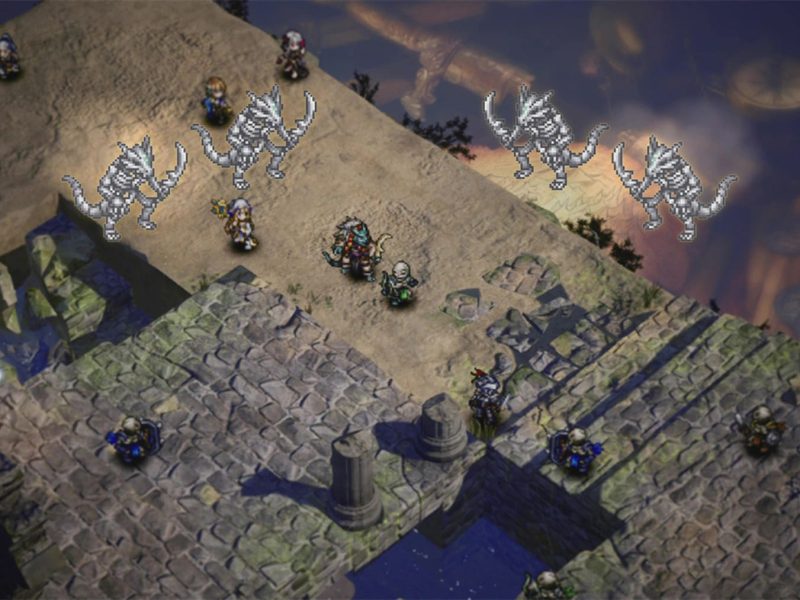The roguelike Conquest mode is this strategy sequel’s hidden gem.
In January of 2019, I proclaimed in my glowing review of Chucklefish’s Wargroove that the title gave Advance Wars fans “what they’ve been clamoring for,” and while 2023 did see the return of Nintendo’s beloved strategy series with Re-Boot Camp, that effort didn’t completely hit the mark. Unlike its predecessor, Wargroove 2 left only a handful of months between its reveal earlier this year and its October release, a pleasant and unexpected surprise to be sure given the two years separating the announcement and launch of the original. Given the similarity in the gameplay, I’ll refer you to my review of Wargroove for a breakdown of its mechanics and instead focus below on what’s new in the sequel, including one addition in particular that really knocks it out of the park.
Within story mode, there are three new campaigns involving the returning factions–including the Outlaws from the Double Trouble DLC–and a brand new faction in the mouse-like Faahri. The campaigns are varied and offer bonus objectives to complete for an added challenge. In addition to new Commanders, each one also has an enhanced Groove ability that allows you to change up to a second tier for a more potent effect. The stages of the campaigns offer a range of objectives, but most of the time you’re winning by either defeating the enemy Commander or destroying the opposing side’s Stronghold. While there’s an array of ways to adjust the difficulty, veterans of the turn-based strategy will likely find the base settings to offer a fairly robust challenge on their own.
Wargroove 2’s most compelling new feature is the roguelike Conquest mode, which features its own unlockable maps, bonuses, and characters. Across another four mini-campaigns (Conquests), you proceed through a series of nodes and forks to reach a final boss fight at the end of each campaign. At the outset, you get to choose from three random Commanders and three sets of starting units (each with its own starting gold amount). Most of the nodes involve a regular battle wherein you need to defeat all enemies present to advance, but the trick is that any damage or losses you sustain carry forward to the next node. There are also spaces where you can recruit more units with money earned from felling enemies, purchase special items, heal either your units or your Commander, or even encounter a special event (which may be harmful or beneficial).
The end result of each individual Conquest, whether successful or not, is that you come away with Shards that can be spent to unlock a variety of goodies within Conquest mode. Initially, only the Cherrystone Conquest is available, and so the Shards you earn there are spent flipping cards on a grid to eventually unlock the next Conquest of Felheim. Along the way, you can also flip cards that add new Commanders to the pool, new shops, new items, a larger starting army, and a greater starting sum of gold. The Shard cost increases steadily as you unlock more and more content, but you can replay all of the Conquests to earn more Shards, and doing so at a higher difficulty multiplies your earnings and awards a higher grade medal. There’s also the built-in replayability of being able to choose a different Commander and initial soldier squad, coupled with the randomness of the Conquest node layout. I ended up spending as much or more time with this game mode, and it alone ended up entertaining me as much as the first Wargroove did.

Other upgrades made their way into Wargroove 2 as well, such as improved map and campaign editing tools, but I do wish there was some kind of tutorial that introduced the section of the game. There are five new units as well, including Frogs that can use their tongue to reposition units and powerful Kraken that can entrap foes. The multiplayer modes from the original Wargroove return here: local play on a single system for two or four players, and online multiplayer (which I wasn’t able to test during the pre-launch period). One noticeable downgrade, however, is the sheer number of softlocks I encountered while playing any of the different game modes. It’s nice that the Story and Conquest modes appear to feature an auto-save that bookmarks your progress, but I had to close and restart the game multiple times due to this issue.
I was done shaking my Wargroove thing in 2019, but this sequel four years later has brought me right back to the colorful, medieval battlefield of Aurania, and I’m absolutely here for it. Much to my delight, the inclusion of a roguelike mode in Wargroove 2’s Conquest feature is the best reason to recommend this hearty sequel, particularly for anyone who enjoyed the original. The sequel is not only more of the same, but also presents a compelling new way to experience its tried-and-true strategy gameplay. While I do like the new Commanders that have made their way into the fold, I would love to see the individual factions have a bit more uniqueness in terms of how they played or their strengths and weaknesses; they’re only distinguished by their appearance and their units names (which can sometimes be confusing). Nonetheless, strategy fans should rejoice at the opportunity to spend more time with a wonderful series that puts a fantasy twist on Advance Wars.


